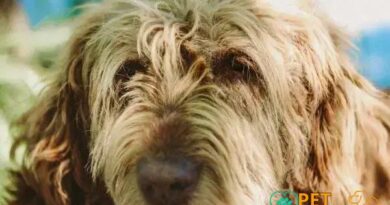What is: Angiostrongylus vasorum in dogs
What is Angiostrongylus vasorum?
Angiostrongylus vasorum, commonly known as the French heartworm, is a parasitic nematode that primarily affects dogs. This parasite is transmitted through the ingestion of infected intermediate hosts, such as slugs and snails. Once ingested, the larvae migrate to the dog’s heart and pulmonary arteries, leading to serious health complications. Understanding this parasite is crucial for dog owners, especially in areas where it is prevalent.
Life Cycle of Angiostrongylus vasorum
The life cycle of Angiostrongylus vasorum begins when a dog ingests an infected slug or snail. The larvae then develop into adult worms in the pulmonary arteries. Adult females produce eggs that hatch into larvae, which are then coughed up, swallowed, and excreted in the dog’s feces. This cycle continues when other slugs or snails consume the larvae, perpetuating the infection cycle. This complex life cycle highlights the importance of controlling exposure to these intermediate hosts.
Symptoms of Angiostrongylus vasorum Infection
Dogs infected with Angiostrongylus vasorum may exhibit a range of symptoms, which can vary in severity. Common signs include coughing, difficulty breathing, lethargy, and weight loss. In some cases, dogs may also experience bleeding disorders due to the parasite’s effect on blood clotting. Early detection and treatment are vital, as the condition can progress rapidly and lead to severe health issues.
Diagnosis of Angiostrongylus vasorum
Diagnosing Angiostrongylus vasorum typically involves a combination of clinical signs, history of exposure to slugs or snails, and specific diagnostic tests. Veterinarians may perform fecal examinations to identify larvae or use blood tests to detect antibodies against the parasite. Imaging techniques, such as X-rays or ultrasounds, may also be employed to assess the extent of the infection and its impact on the dog’s health.
Treatment Options for Angiostrongylus vasorum
Treatment for Angiostrongylus vasorum usually involves the administration of anthelmintic medications to eliminate the parasites. In severe cases, supportive care may be necessary to manage symptoms and complications, such as respiratory distress or bleeding. It is essential for dog owners to follow their veterinarian’s recommendations closely to ensure a successful recovery and prevent reinfection.
Prevention of Angiostrongylus vasorum
Preventing Angiostrongylus vasorum infection is primarily focused on reducing exposure to slugs and snails. Dog owners should avoid allowing their pets to roam in areas where these intermediate hosts are prevalent. Additionally, regular veterinary check-ups and preventive medications can help protect dogs from this parasite. Awareness of the signs and symptoms of infection is also crucial for early intervention.
Geographical Distribution of Angiostrongylus vasorum
Angiostrongylus vasorum is found in various regions, particularly in Europe and parts of South America. Its prevalence has been increasing in some areas, raising concerns among veterinarians and dog owners alike. Understanding the geographical distribution of this parasite can help pet owners take necessary precautions, especially when traveling or relocating to new areas.
Impact on Dog Health
The impact of Angiostrongylus vasorum on dog health can be significant, leading to chronic respiratory issues, heart problems, and even death if left untreated. The parasite’s ability to cause bleeding disorders adds another layer of risk, making it essential for dog owners to remain vigilant. Regular veterinary care and prompt treatment of any concerning symptoms can help mitigate these risks.
Research and Future Perspectives
Ongoing research into Angiostrongylus vasorum aims to better understand its biology, transmission, and effects on canine health. Advances in diagnostic techniques and treatment options are also being explored to improve outcomes for infected dogs. As awareness of this parasite grows, it is hoped that more effective prevention strategies will be developed to protect dogs from this serious health threat.




